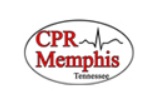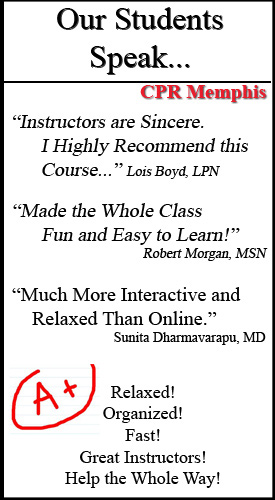Unraveling the Acronym: What CAB Truly Means in CPR
Call Us Now
Get the Best CPR Class in Memphis Today!
Cardiopulmonary Resuscitation (CPR) stands as a cornerstone of emergency medical care, serving as a crucial intervention to save lives in cardiac arrest situations. With its ability to restore blood circulation and oxygenation to vital organs, CPR plays a pivotal role in increasing the chances of survival for individuals experiencing cardiac emergencies.
Understanding the protocols and techniques involved in CPR is paramount for anyone who may find themselves in a position to administer life-saving assistance. By equipping individuals with the knowledge and skills needed to perform CPR effectively, lives can be saved and outcomes improved in critical situations.
In recent years, there has been a shift in CPR protocols from the traditional ABCs (Airway, Breathing, Circulation) to the modern CAB approach. This article aims to delve into the meaning of CAB in CPR, unraveling its components and exploring its significance in contemporary CPR guidelines.
Understanding CPR Basics
CPR serves the vital purpose of maintaining blood flow and oxygenation to the body’s vital organs during cardiac arrest. By performing chest compressions and providing ventilation, responders can circulate oxygenated blood to the brain and other tissues, preserving life until advanced medical care arrives.
Call Us Now
Get the Best CPR Class in Memphis Today!
Historically, CPR protocols focused on the ABCs: Airway, Breathing, and Circulation. These steps provided a framework for responders to follow when administering CPR, emphasizing the importance of airway management, breathing support, and circulation in sustaining life.
In recent years, the American Heart Association (AHA) and other leading medical organizations have transitioned to the CAB approach in CPR protocols. This shift reflects advancements in medical understanding and evidence-based practices, prioritizing circulation as the initial step in CPR.
What Does CAB Stand For?
CAB stands for Compressions, Airway, and Breathing, representing the revised sequence of steps in modern CPR protocols. This acronym underscores the importance of prioritizing chest compressions to maintain blood circulation, followed by interventions to clear the airway and provide breathing support.
- Compressions: The first step in CAB emphasizes the critical role of circulation in CPR. By initiating chest compressions promptly, responders can generate blood flow to vital organs, increasing the likelihood of survival.
- Airway: After initiating chest compressions, attention is directed towards ensuring a clear and open airway. This involves techniques such as head tilt-chin lift or jaw thrust maneuvers to facilitate adequate ventilation.
- Breathing: Finally, once circulation and airway are addressed, responders focus on providing rescue breaths to support oxygenation. However, in the CAB approach, breathing considerations come after circulation is established.
Explanation of Why CAB Has Replaced ABC
The shift from ABC to CAB in CPR protocols reflects advancements in medical knowledge and research. Studies have shown that prioritizing chest compressions over airway and breathing interventions improves outcomes, particularly in out-of-hospital cardiac arrest scenarios.
In cardiac arrest, maintaining blood circulation is paramount for delivering oxygenated blood to vital organs, such as the brain and heart. Chest compressions serve as the primary intervention to generate blood flow, preserving organ function until the heart can be restarted. Studies have demonstrated a direct correlation between the quality of chest compressions and survival rates in cardiac arrest. Effective circulation sustains vital organ perfusion, increasing the likelihood of return of spontaneous circulation (ROSC) and survival to hospital discharge.
Critical Skills for CAB CPR
Techniques for Assessing and Maintaining Circulation
Responders are trained to assess for the presence of a pulse and signs of circulation during CPR. High-quality chest compressions, performed at the correct depth and rate, are essential for optimizing blood flow and achieving favorable outcomes in cardiac arrest resuscitation efforts.
Understanding Airway Management
Maintaining a patent airway is crucial for ensuring adequate oxygenation during CPR. Airway management involves techniques to clear obstructions and establish an open passage for airflow, allowing for effective ventilation and oxygen exchange in the lungs. Responders utilize various maneuvers, such as the head tilt-chin lift or jaw thrust technique, to open the airway and remove any obstructions, such as the tongue or foreign objects. Clearing the airway facilitates the passage of air during rescue breathing, optimizing oxygen delivery to the lungs.
Effective airway management is essential for successful CPR outcomes. Ensuring an open airway enables adequate ventilation and oxygenation, supporting the body’s metabolic needs and increasing the likelihood of achieving the return of spontaneous circulation (ROSC).
Providing Effective Breaths
In the CAB approach to CPR, breathing considerations follow the initiation of chest compressions. This sequencing prioritizes circulation and focuses on delivering oxygenated blood to vital organs before addressing ventilation. Once circulation is established, responders assess for the presence of spontaneous breathing and provide rescue breaths as needed. Techniques such as mouth-to-mouth ventilation or the use of barrier devices facilitate effective oxygenation during CPR efforts.
Adequate ventilation supports oxygen delivery to the lungs, facilitating oxygenation of the bloodstream and vital organs. Effective rescue breathing, combined with high-quality chest compressions, improves the chances of achieving ROSC and favorable outcomes in cardiac arrest.
Integrating CAB into CPR Training
CPR training programs that incorporate the CAB approach provide responders with the latest evidence-based practices and guidelines. Teaching CAB emphasizes the importance of circulation and chest compressions, aligning with recommendations from leading medical organizations.
Instructors utilize hands-on training, simulation scenarios, and interactive learning techniques to teach CAB protocols effectively. By providing practical skills training and feedback, responders gain confidence and proficiency in performing CPR according to the CAB approach. Continued education and practice are essential for maintaining competency in CPR skills. Responders are encouraged to participate in regular training sessions, skills checks, and refresher courses to reinforce their knowledge and proficiency in CAB-based CPR techniques.
Understanding the CAB approach in CPR is crucial for responders to effectively intervene in cardiac arrest situations. Prioritizing circulation and chest compressions maximizes the chances of survival and improves outcomes for individuals experiencing cardiac emergencies. By staying informed and proficient in modern CPR techniques, individuals can make a meaningful difference in saving lives within their communities.
As CPR continues to evolve, mastering the CAB approach is paramount for responders to maximize survival rates and outcomes in cardiac arrest. By unraveling the acronym and understanding its significance, individuals unlock the potential to save lives and make a positive impact in emergency situations.









